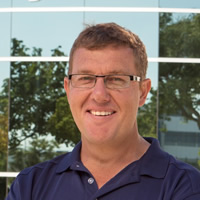Presented at NZ Hydrological Society Technical Workshop 17-20 March 2020
Abstract
The research and development on Remote Piloted Aircraft Systems (RPAS) / Unmanned Aerial Vehicle (UAV) have grown significantly over recent years. The control systems, guidance systems and payload of UAVs available on the market makes it an attractive solution for a range of Scientific and Engineering applications that was previously unachievable.
The incorporation of ‘Drones’ within the existing Civil Aviation framework for Remote Piloted Aircraft Systems was essential due to the range of recreational and commercial applications. Civil Aviation Authority of New Zealand published advisory circulars for remotely piloted aircraft systems (AC101-1 and AC102-1) with respect to the overall weight class.
The operation of remotely piloted aircraft systems should be performed within the guidelines outlined in advisory circulars AC101-1 and AC102-1. There are number of factors associated with the operation of UAVs and it‘s the pilot responsibly that these factors are taken into account during the planning, action and inspection stages of each UAV flight.
The largest contributing factor of all UAV accidents apart from the aircraft itself, are human impacts. This and other contributing factors can be mitigated by implementing a comprehensive process to identify and minimize any risk associated with UAV operation.
Presenter bio
 Daniel started his hydrographic career at DWA in South Africa as a Civil Engineer Technician with experience in surface and ground water monitoring. He expanded his career of 31 years in Water Engineering and Hydrographic Operations by accepting the Manager of Water Monitoring Systems position (2008) at DLRM in Northern Territory. He made the conscious decision to further specialize in Water Engineering by accepting a position (2014) at SonTek in San Diego, USA. Daniel returned to Australia by accepting a Senior Hydrologist position (2018) at Xylem Water Solutions. Daniel holds a B.Sc. in Water Engineering from Central University Technology and B.Sc. in Geohydrology from Free State University.
Daniel started his hydrographic career at DWA in South Africa as a Civil Engineer Technician with experience in surface and ground water monitoring. He expanded his career of 31 years in Water Engineering and Hydrographic Operations by accepting the Manager of Water Monitoring Systems position (2008) at DLRM in Northern Territory. He made the conscious decision to further specialize in Water Engineering by accepting a position (2014) at SonTek in San Diego, USA. Daniel returned to Australia by accepting a Senior Hydrologist position (2018) at Xylem Water Solutions. Daniel holds a B.Sc. in Water Engineering from Central University Technology and B.Sc. in Geohydrology from Free State University.
Presentation
To watch the video, you will need your AHA member password sent to members by email

